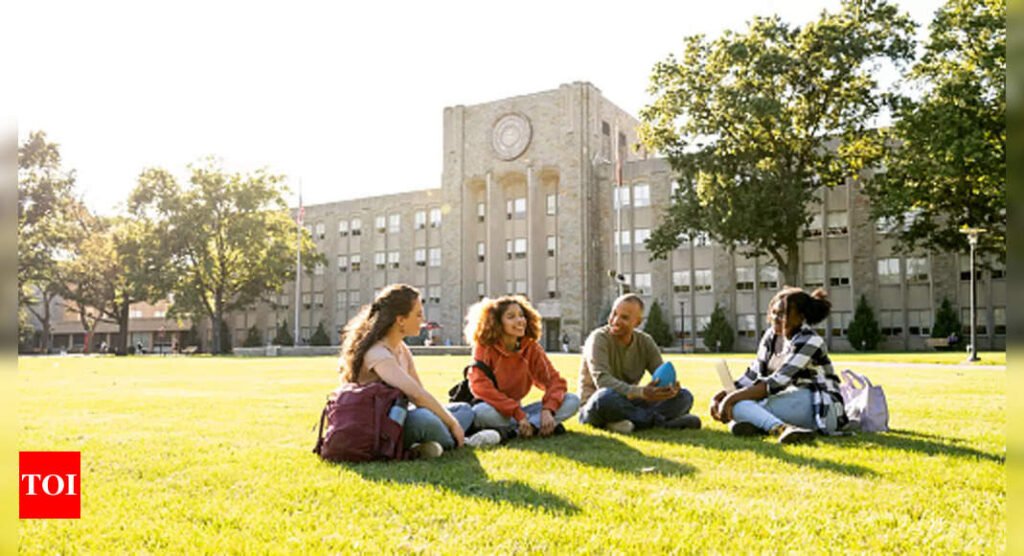

The re-election of Donald Trump as President of the United States has had a profound effect on the global education landscape, particularly influencing the decisions of international students. As a result of policies and political rhetoric during his first term, a growing number of prospective international students are now less inclined to pursue higher education in the US According to a recent survey by the Keystone Education Group, 42% of students from various countries report that they are now unlikely to consider the US as a study destination. This shift, largely driven by the political climate, visa restrictions, and concerns about safety, poses a significant challenge to US higher education institutions.
Decline in US Interest: A Global Shift
The impact of Trump’s presidency on international student interest is evident in the changing dynamics of student searches for US graduate programs. Data from the Keystone report reveals that between October 30 and November 6, 2024, the number of students searching for Master’s and PhD programs in the US dropped by 5%. Additionally, overall interest in US educational programs declined by 3%, with North American students showing a 17% drop in their consideration of US institutions. This downturn indicates that students are not only reconsidering their options but also seeking alternatives in regions that offer more welcoming environments.
With growing political uncertainties, many US students are also beginning to seek study opportunities outside the US after Trump’s re-election. Data shows that US inquiries for overseas study programs spiked by 20-30% as students sought more stable, politically progressive environments for their education.
European Students Most Affected
The Keystone survey highlights significant regional differences in the responses. European students, in particular, are most affected, with 58% indicating that Trump’s re-election has negatively impacted their interest in studying in the US This is especially evident in countries with strong academic traditions and international student flows, where there is now a noticeable shift in preferences toward other destinations. In comparison, 21% of Asian students and 29% of African students also reported a decreased likelihood of considering the US as a study destination.
Emerging Study Abroad Destinations: New Opportunities
While the US loses its appeal, other countries are experiencing a surge in international student interest. Sweden, Finland, and Singapore, in particular, have seen significant increases in student searches, with Sweden up by 37%, Finland by 36%, and Singapore by 30%. These countries offer competitive education systems, progressive political environments, and more favorable visa policies, making them attractive alternatives for students seeking stability and inclusivity.
In addition to the Scandinavian and Asian countries, New Zealand (+29%), Czechia (+28%), Italy (+25%), the United Kingdom (+19%), and Spain (+19%) have also emerged. as popular destinations. These countries are not only offering high-quality education but are also perceived as politically stable and more welcoming to international students, further diminishing the US’s dominance in global higher education.
International Students in the US Before and During Trump’s Presidency
Before Donald Trump’s presidency in 2017, the US saw consistent growth in international student numbers, with 1.08 million international students enrolled in the 2016/17 academic year. However, this growth began to slow under Trump’s administration. The 2017 Open Doors report highlighted a decline in new international student enrolments, which dropped by 3%, marking the first decline in 12 years. Contributing factors included global political uncertainties, stricter visa policies, and a reduction in scholarships from countries like Saudi Arabia and Brazil, all of which affected enrollment numbers.
The Impact of Trump’s Presidency on US Students Studying Abroad
US students also faced challenges when considering study abroad opportunities during Trump’s presidency. Prior to 2017, there had been a steady rise in US students studying abroad, with a 4% increase in 2015/16. However, political rhetoric and the shifting international climate under Trump made many US students more cautious about studying overseas. Despite a slight 4% increase in US students abroad in 2016, there was a growing uncertainty, especially as global political tensions began to escalate.
Global Competitiveness and Changing Trends in Study Abroad
Trump’s presidency saw US higher education increasingly focused on domestic issues, shifting study abroad trends. While Europe remained a popular destination, countries like China saw a significant decline in US student numbers, with a 9% drop during his tenure. Meanwhile, destinations like Australia, Japan, and Mexico saw growth. As global competition for international talent intensified, the US became less of a default destination, with increasing diversity in US students studying abroad.
Key Actions Taken by the Trump Administration that Deterred International Students
During Donald Trump’s presidency, several actions were taken that deterred international students from coming to the US and led to an increased interest in studying abroad. Here’s a detailed list of key actions:
Immigration and Visa Restrictions
• Travel Bans and Visa Restrictions: The 2017 travel ban restricted citizens from several Muslim-majority countries, including Iran, Syria, and Libya, making it difficult for students from these regions to enter the US for studies. Stricter visa vetting and delays further compounded challenges for international students.
• “Public Charge” Rule (2019): This rule aimed to limit immigration for individuals likely to rely on government assistance, adding more barriers for international students and their families.
Rhetoric and Political Climate
• Anti-Immigrant Sentiment: Trump’s “America First” policies and anti-immigrant rhetoric created a hostile environment, making many international students hesitant to study in the US The perception of a less welcoming US led to doubts about safety and acceptance.
• Nationalist “America First” Education Policies: The administration’s emphasis on prioritizing US citizens and a nationalist approach to education made international students feel unwelcoming, deterring them from choosing US institutions.
Changes to Study Abroad Programs and International Exchange Agreements
• Termination of Study Abroad Agreements: Some US institutions, like the University of Florida, cut ties with countries such as China, Russia, and Iran. These countries have historically sent many students to the US, and such policies discouraged students from considering the US as a destination.
• Impact on International Collaborations: Universities faced limitations in partnerships with foreign institutions, reducing the flow of international students.
Restrictions on OPT and Work Visas
• OPT and H-1B Visa Restrictions: Efforts to limit Optional Practical Training (OPT) and restrict H-1B visas, crucial for international students to work post-graduation, made the US less attractive for students seeking long-term career prospects.
Declining Diplomatic Relations and Global Perception
• Strained US-China Relations: Tensions with China led to a decline in Chinese student enrollment, the largest group of international students in the US, and increased interest in alternative study destinations.
• Damage to Soft Power: Trump’s “America First” approach weakened the US’s global image, making it less appealing for international students.
Potential Future Impact
• Stricter Immigration Policies: If restrictive policies continue, they may further discourage international students from coming to the US States like Florida may also limit study abroad programs, reducing opportunities for both US students abroad and international students in the US.







